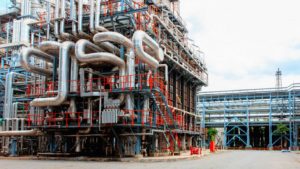How smart capital project managers bridge the gap between engineers and construction managers
Solid workflows and supportive technology are critical components of a successful capital project, but ultimately we rely on people to make things work. Even teams that understand the benefits of a construction-driven approach will struggle to execute it if they’re continually bumping up against entrenched interpersonal and interdepartmental paradigms. This is a particularly big risk when teams are using the Advanced Work Packaging methodology for the first time.
Here are four easy ways to can help your engineers and construction leads work together productively in these changing times.
1| Support engineers in their efforts to collaborate with construction
Historically, capital project engineers have had strong control over every aspect of front-end development, and established systems and protocols are built around their accountabilities. In a construction-driven environment, engineering has to relinquish some of that control, and some of those systems and protocols will have to change. Beyond these organizational impediments, giving up control simply isn’t easy for most people to do — particularly when engineers still shoulder much of the practical and legal risk associated with front-end development.
The solution is to establish a clear, explicit mandate that explains how, when and why construction managers will take a bigger role in front-end development. This is easier in an E/P/C setup, as the engineering company will comply if the integration of construction needs is a contractual requirement. For consolidated EPC companies, however, it will be more of a challenge, since the paradigm shift has to happen inside the organization itself. The key: Write it down, provide training on why is construction-driven engineering beneficial for the entire project performance, and offer ongoing support for teams that encounter challenges.
2 | Support construction managers in the office
Construction managers typically come up on the field side of capital project execution and are most at home on an active construction site, where work is physical, visible, and typically done outdoors. A construction-driven project approach requires them to join the project at a much earlier juncture, when the work is done on paper and screens, and progress takes place in meetings, memos and invisible milestones. These are radically different working conditions that demand vastly different skill sets, and construction managers often experience a kind of culture shock. Companies simply cannot expect that someone who has spent decades in the field will transition effortlessly into an office environment.
The solution is to offer practical office support and leverage the construction manager’s strengths in an office environment. Consider assigning a mentee who can assist with technology and help navigate office protocols while learning construction management theory from a field veteran. Allow the Construction Manager to drive interactive planning sessions verbally, with support for PowerPoints, write-ups and flowcharts. Above all, be sensitive to the culture change and support the person in transition.
3 | Focus on active facilitation
When it comes to bridging the gap between engineering and construction, active facilitation means getting key people into the room and working to ensure that they’re communicating effectively. If they’re not, you need to force the interaction. During the initial meetings, the project manager must be clear that construction is in the front seat, right beside engineering.
The very best way to do this is by modeling and encouraging a new style of discourse. Engineers will need to learn when and how to ask for construction input, and construction managers will need to learn when and how to give it. Remember that, until now, these two parts of your team have operated independently from one another; there are no established communication protocols. Help your team navigate these first meetings by setting a high standard for respectful, productive engagement.
4 | Support people continuously, from start to finish
Engineers and construction managers have radically different experiences of a project. Engineers work in a conceptual way, in their heads, and on paper. Construction managers work in a tangible way, with their hands and on-site. You can’t integrate these disparate experiences on paper, in an organizational chart. Integration only happens in real life, between real people.
Project managers need to pay close attention to every single person in the org chart: How they view their roles, how they interpret what they need to do, and how they execute. Job titles and descriptions are important, but they don’t say anything about a person’s nature, strengths or skills. If you continually monitor the members of your team — especially the first time they execute a construction-driven AWP project — you’ll be able to maintain a good balance between what they should be doing, what they want to be doing, and what they’re good at.





